Sunil Batra Solutions for Chapter: Reflection and Refraction, Exercise 5: PRACTICE QUESTIONS
Sunil Batra Physics Solutions for Exercise - Sunil Batra Solutions for Chapter: Reflection and Refraction, Exercise 5: PRACTICE QUESTIONS
Attempt the free practice questions on Chapter 4: Reflection and Refraction, Exercise 5: PRACTICE QUESTIONS with hints and solutions to strengthen your understanding. Modern's ABC+ Of Science Physics solutions are prepared by Experienced Embibe Experts.
Questions from Sunil Batra Solutions for Chapter: Reflection and Refraction, Exercise 5: PRACTICE QUESTIONS with Hints & Solutions
Parallel rays, from the top of a distant tree, incident on a concave mirror, form an image on the screen.

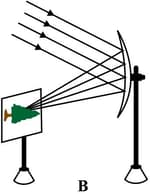
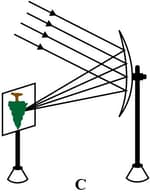
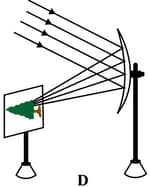
The diagram correctly showing the image of the tree on the screen is
For the refraction, through a rectangular glass slab, the diagram is given below.

The angle of incidence, angle of emergence and angle of refraction are respectively:
A student obtains a blurred image of a distant object on a screen using a convex lens. To obtain a distinct image on the screen he should move the lens
Study the given ray diagrams and select the correct statement from the following:
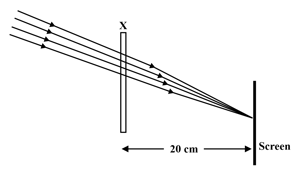
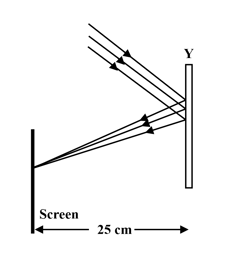
A student very cautiously traces the path of a ray through a glass slab for different values of the angle of incidence . He then measures the corresponding values of the angle of refraction and the angle of emergence for every value of the angle of incidence. On analysing these measurements of angles, his conclusion would be
The correct sequencing of angle of incidence, angle of emergence, angle of refraction and lateral displacement shown in the following diagram by digits , , and is:
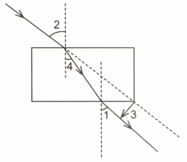
Three students P, Q and R focussed a distant building on a screen with the help of a concave mirror. To determine focal length of the concave mirror they measured the distances as given below:
Student P: From mirror to the screen
Student Q: From building to the screen
Student R: From building to the mirror
Who measured the focal length correctly?
If you focus the image of a distant object, whose shape is given below, on a screen using a convex lens,

the shape of the image of this object on the screen would be:
